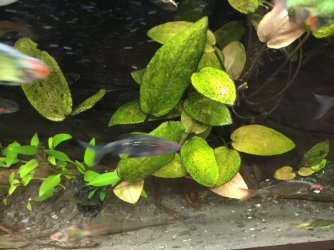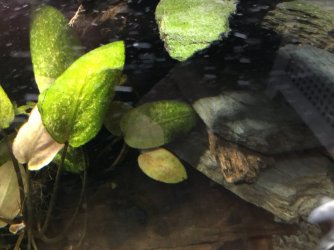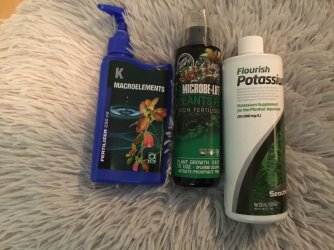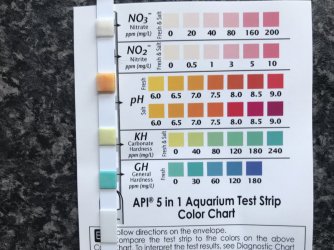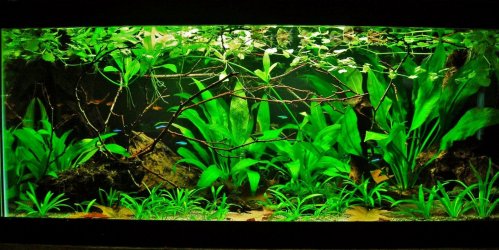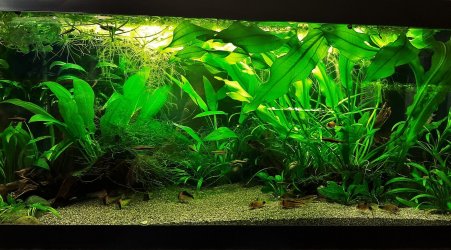I should have caught that, but I was looking at the similar-leaf plant to the right of the Echinodorus, and that plant has an Anubias-like rhizome showing, at least it looks like that in the two photos.
Echinodorus are heavy root feeders, and will always do better with substrate tabs (Flourish Tabs for example, not all tabs are good). If you stuck a tab next to the root mass, i think you would be amazed at the growth after a few weeks. I have for years followed a similar method, try plant "x" and if it fails, move on to another, until you have a tank of plants that obviously work together. do very well for me, I have exactly the right light (moderate), and minimal ferts (always use the tabs though); the photos below are of my 40g tank, the first from 2016 when I set it up with plants culled from other tanks; the large swords are Echinodorus grisebachii (var. bleherae), and the chain swords are now classified in Helanthium as H. bolivianus. You can see multiple inflorescences with adventitious plants running everywhere. The second photo is the 40g tank after I moved in May 2019, and this is now my largest tank, and designed specifically to provide an appropriate environment for my 40-odd Corydoras. E. griesbachii var. bleherae, E. major (the largest sword to the right of centre, which has flowered twice over the past decade, and the H. bolivianum.


